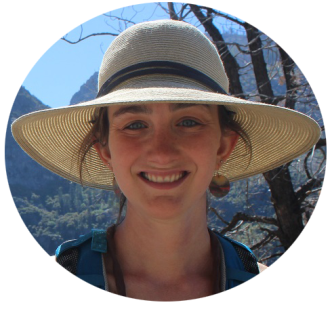The CRMRN will be sharing Q&As with graduate and postdoctoral network members throughout the summer and fall. Stay tuned!
Meet Liz Kreitinger. Liz is an MS/PhD student in the Soil and Water Lab at Cornell University. With her advisor Todd Walter and CRMRN steering committee member Dave D’Amore, she is studying how watersheds process nutrients, including how landscape change influences water quality, and how conservation measures can best be applied to promote ecological resilience. We asked her a few questions following our third workshop in April 2019.
What led you to your interest in studying nitrogen cycling in temperate forests?
L: I first became interested in studying nitrogen from a water quality perspective in agricultural and mixed-use landscapes. I’m from the Finger Lakes region of New York State, right between the headwaters of the Chesapeake Bay and Great Lakes watersheds, and I wanted to understand the processes that control nutrient movement from land to water. My questions led me upstream and into the soils of headwater catchments including temperate forests in both the eastern US and, amazingly, with the help of my advisor Todd Walter and Dave D’Amore, to Alaska. Doing research in Alaska has given me a more nuanced view of nitrogen in the environment and allowed me to think about the same processes but in a very different ecosystem. Relative to watersheds that receive larger inputs of nitrogen from human activity, in Alaska we think more about nitrogen in terms of its role limiting primary productivity and interactions with the carbon cycle.
What do you hope to gain from being a part of this network?
L: The CRMRN has been really important to me as a student. The meetings have allowed me to sit down and brainstorm with an international group of researchers in small group settings, and I’ve learned a lot from those interactions. I also think there is a lot of value for me, and students generally, to engage with professionals outside of home institutions. I hope to continue learning from the CRMRN group and find opportunities to continue the collaboration.
What did you get out of attending the third CRMRN workshop last spring?
L: The workshop was a crash course in a wide breadth of relevant research that’s been done across the coastal temperate rainforest domain. It’s enabled me to connect faces and conversations to papers I’ve read and think about the research in the context of our scientific community, rather than just lists of citations. One specific thing I enjoyed learning more about was disturbances such as landslides and other mass wasting events and their effects downstream.
What is it like doing fieldwork in Alaska?
L: One of my favorite lessons has been that scale is relative, and everything in Southeast Alaska is so much larger. Back home when someone says the field site is “close to the road,” it might be a roadside stream crossing or maybe a 5-minute walk into the woods. When someone says the site is “close to the road” in Alaska, it might be a 45-minute hike up the side of a mountain, and at least a little bushwhacking through devil’s club.
This interview was edited for clarity and length.